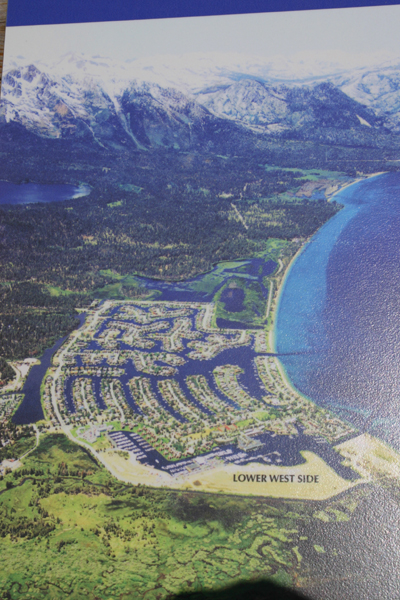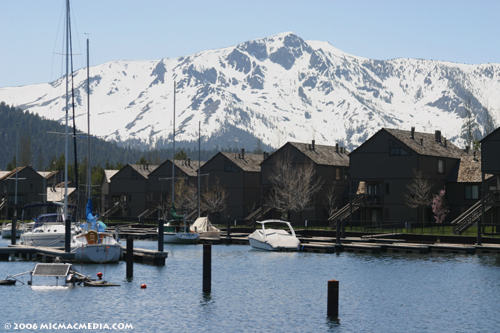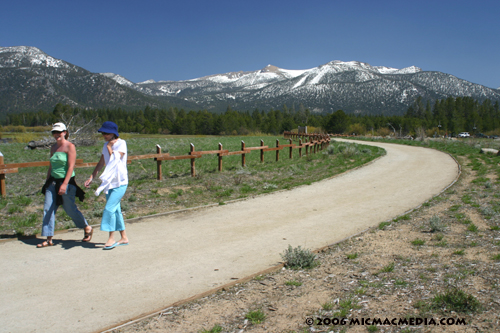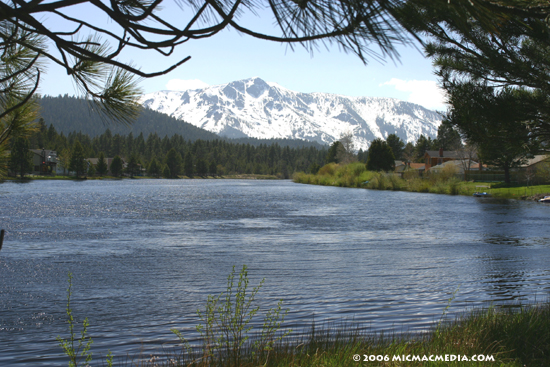|
Tahoe Nugget #74:
Tahoe Wetland Restoration (5 Photos)
May 12, 2006
In response to degrading environmental conditions in the Lake Tahoe Basin, the governors and lawmakers in California and Nevada approved a bi-state compact that created a regional planning agency to oversee
development at Lake Tahoe in the late 1960s. In 1969, the United States Congress ratified the agreement and created the Tahoe Regional Planning Agency. TRPA was the first bi-state regional environmental planning
agency in the country.
One of the highest priorities of TRPA is to halt the rapidly diminishing clarity of Lake Tahoe due to accelerated erosion of nutrient-laden sediments into the lake's water. The
main infusion of nutrients that feed the algae bloom that are responsible for clouding the lake's historically clear water enter the lake through developed areas like Tahoe City, Incline Village and South Lake
Tahoe.
Most of Lake Tahoe's wetland areas have been developed into urban communities and lost to reclamation, but TRPA is intent on trying to restore about 10% of the original wetlands in the basin. To
achieve this worthwhile goal, they are working with the California Tahoe Conservancy and other agencies. Wetlands are highly effective in improving water quality through natural processes.
The Upper Truckee
Marsh and Wetland Restoration Project at South Lake Tahoe is vitally important to the health of Lake Tahoe. The Upper Truckee Marsh is considered an "Ecologically Significant Area" because wetlands of this
size are rare in the Sierra. It provides important habitat for a relatively high diversity of wildlife such as birds of prey, waterfowl, amphibians, fish and mammals. This large area of natural wetlands at the south
end of the lake has been highly disturbed and currently contributes a large proportion of sediment and nutrient loading into the lake.
Historically, the wetland region where the Upper Truckee River flows
into Lake Tahoe was used for Native American summer encampments, log transport via flumes and cattle grazing. More recently, in the mid-1950s, the Tahoe Key's development broke ground on the western side of the
marsh, filled in 500 acres of the original wetland, dredged canals and channelized the Upper Truckee River. These activities have severely compromised the environmental integrity of the area and its ability to
protect the clarity of the lake and support native plant and wildlife species. Bald eagles, beaver, osprey and many other animals rely on the wetland for food, protection and nesting.
The Upper Truckee River
restoration project, which involves 513 acres of highly disturbed wetland, is located at the mouth of the two largest watersheds in the basin and receives runoff from the largest urbanized area in the basin. The
California Tahoe Conservancy is taking the first steps in restoring the area's natural, self-sustaining river and floodplain processes and functions, which will improve water quality and restore and enhance the
quality of fish and wildlife habitat.
The area offers hiking, wildlife viewing, and is dog-friendly with waste bags and trash receptacles available. Make sure you keep your dog on a leash. Unleashed dogs
harass, injure, and kill wildlife and could be injured or exposed to diseases themselves.
Be warned: the fine for an unleashed dog is $85 for a first offense.
Photo #1: Map of Tahoe Keys development
and restoration project site.
Photo #2: The Tahoe Keys conceived with boaters in mind.
Photo #3: Peaceful beauty of the Upper Truckee River marshland is just few miles from the cluster of Nevada casinos.
Photo #4: Pedestrian and dog-friendly trail though marshland.
Photo #5: The Tahoe Keys boast spectacular views of Mt. Tallac.





|







